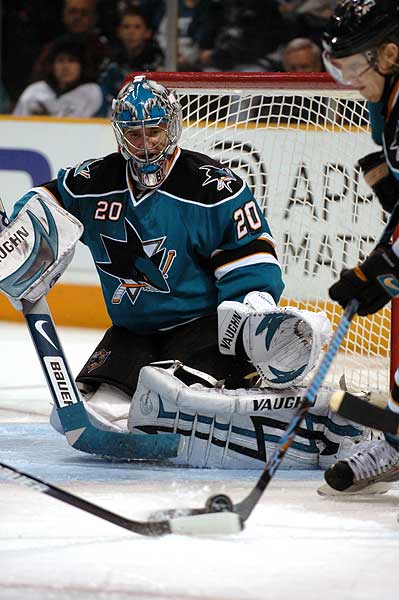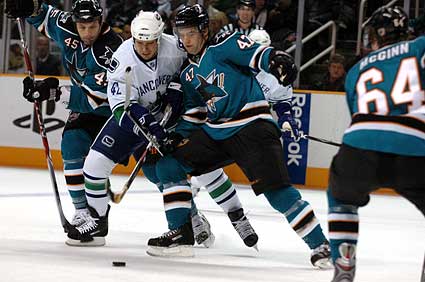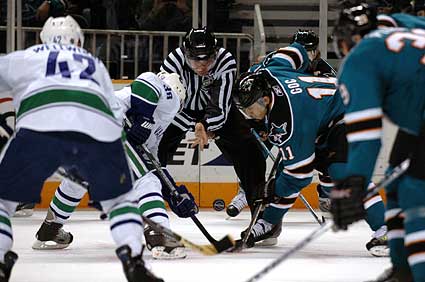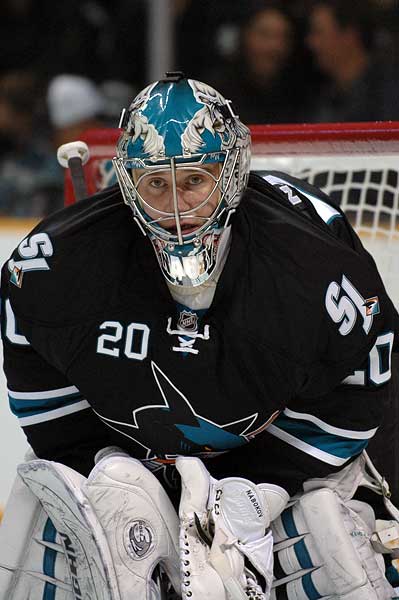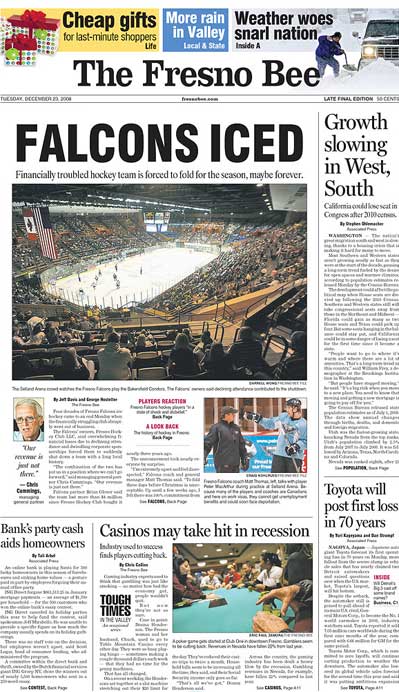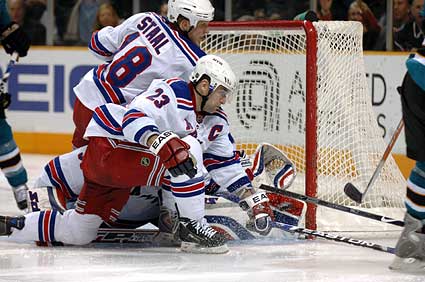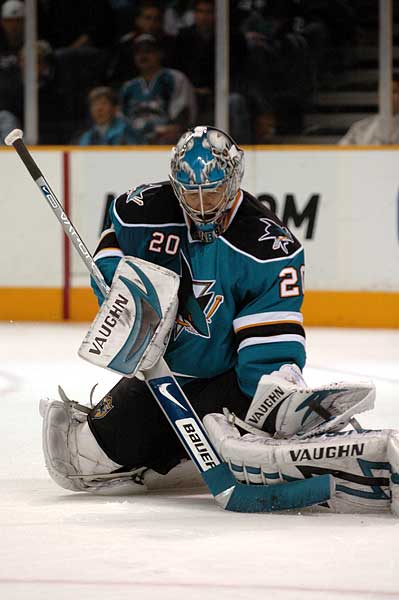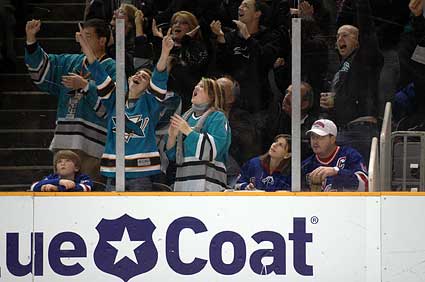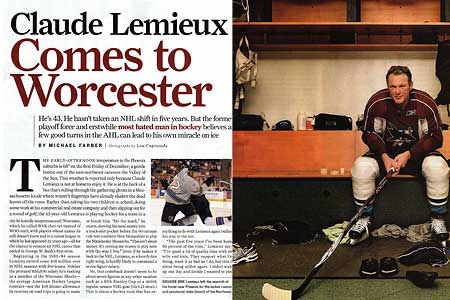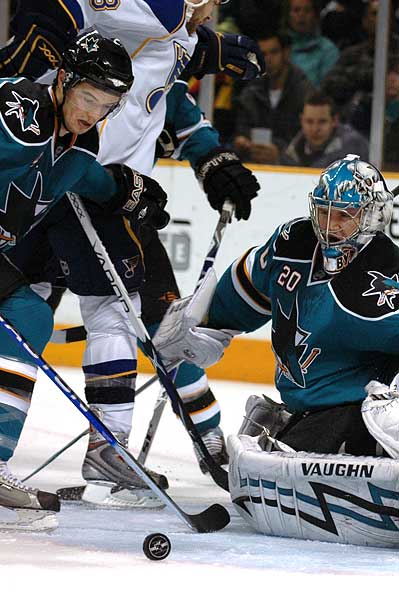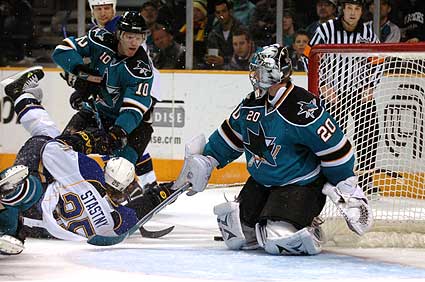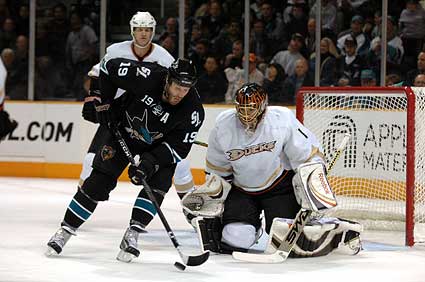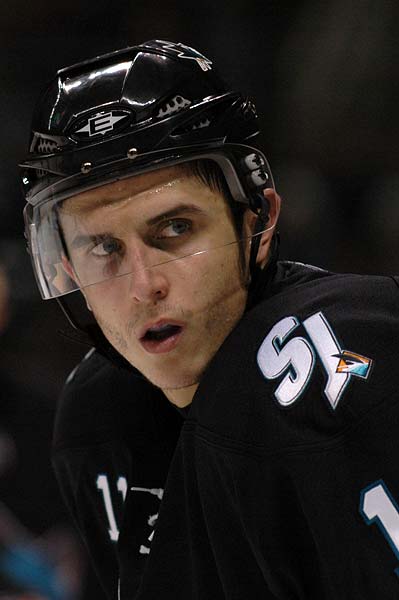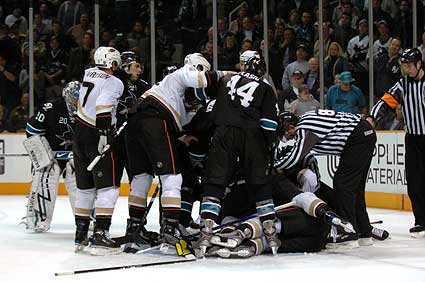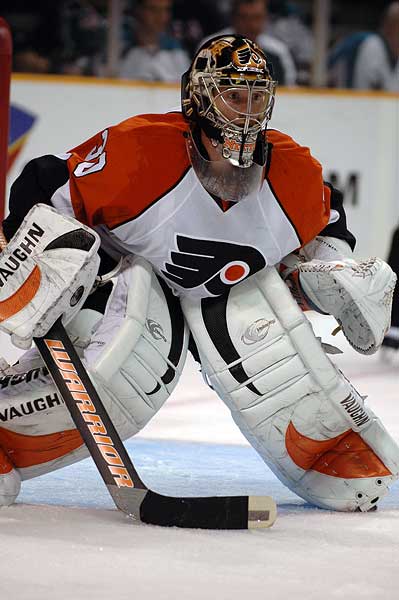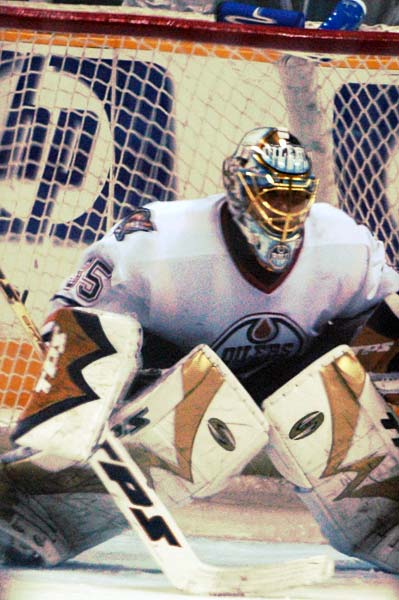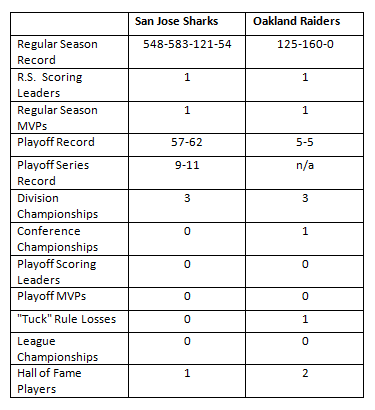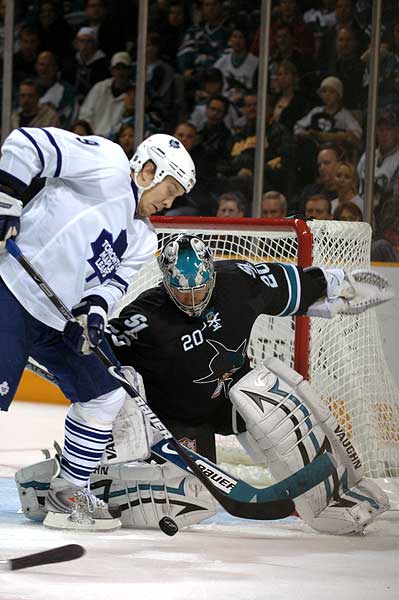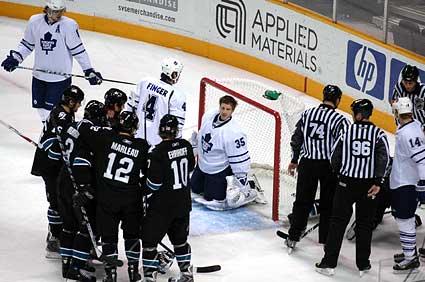Two years ago a
perfect storm of negative newspaper news greeted the NHL prior to the start of its 89th anniversary season. Three of the largest U.S. newspapers, the New York Times, the Washington Post, and the Los Angeles Times, reduced the amount of hockey coverage appearing in print. The rising popularity of the NHL has transformed how newspapers cover the league, but a closer examination of the problems that lead to this transformation is neccessary to gauge where it might lead in the future.
In 2006, New York Times sports editor Tom Jolly said the reduced coverage of the NHL was a decision to "best allocate our resources". When Los Angeles Times sports editor Randy Harvey was asked about not sending beat writers to cover the Anaheim Ducks or LA Kings on the road, he described the NHL as a "niche sport" in his market. The Ducks would later march on to win the first Stanley Cup Championship for a Californian team. Washington Capitals owner Ted Leonsis complained on this blog about days his team was never mentioned in the Washington Post, stating that the "concept of an editor and a couple of reporters deciding what is news is kind of 19th Century".
The bad news continued prior to the start of the 2007-08 season. Both beat reporters covering the San Jose Sharks for the San Francisco Chronicle and San Jose Mercury News, Ross McKeon and Victor Chi, were bought out and laid off in the same week. This blog took a lot of criticism for calling it a
Black Day for hockey coverage in the Bay Area, but the description of the moves as a "paradigm shift" for local sports reporting was a fairly accurate one. Earlier that year, Toronto Star deputy sports editor
Chris Young said the newspaper business was at a crossroads because the physical newspaper model no longer applies.
At the start of the 2008-09 NHL season, like clockwork bad media news arrived. The Globe and Mail's veteran media analyst William Houston penned an article that carried the meme one step furthur,
Economy bodychecks NHL coverage. Houston reported that the Palm Beach Post decided to discontinue coverage of the Florida Panthers as 40% of the newsroom staff was laid off. Houston also mentioned longtime Philadelphia Inquirer beat writer Tim Panaccio's departure to write online for Comcast and Hockeybuzz.com. In an interview with the popular
700 Level Philly Blog, Panaccio described Inquirer sports editor Jim Cohen telling him that the NHL was an "irrelevant sport", asking him to move to the Philadelphia Eagles beat. Panaccio declined, and he left the paper a few months later.
The onslaught of critical comments is a result of a struggling newspaper industry more than a performance or popularity issue regarding the NHL. According to the World Association of Newspapers
World Press Trends 2008 Report, circulation sales for newspapers in North America are down 2.14% from last year. Advertising revenues increased everywhere but North America, where they dropped 2.77%. The WAN report noted that internet advertising revenue in North America is 20 times greater than those of Europe, Latin America, the Middle East and Africa combined, but individual accounts such as
this one by Gawker Media founder Nick Denton point to an even greater decline on the internet advertising horizon. Denton claims as much as a 40% drop in internet advertising revenue should be a contingency businesses plan for.
Both shoes have dropped on the newspaper business, and staffs have been slashed as managment tries to stem the financial bloodletting. Graphic designer Erica Smith, a St Louis Post Dispatch veteran, has been independently chronicling newspaper buyouts and layoffs with an interactive map on her PaperCuts website. Interactive maps detail over 13,748 newspaper jobs lost year to date in
2008, and over 2,185 newspaper jobs lost in
2007. Using her figures, she has seen a 276.26% increase in layoffs and buyouts from June 2007 to June 2008. The numbers are not comprehensive, but they paint a picture of how much the industry is struggling. To make matters worse, ContentNext founder and longtime analyst Rafat Ali said on Bloomberg TV last Friday that
media layoffs will get worse in 2009.
After a series of accusations, counter-accusations, and failed meetings lead to the first cancellation of an NHL season since the 1918 Influenza epandemic, the league and the players union dug themselves a large hole with the 2004-05 lockout. Newspapers, television stations, and teams laid off employees and reduced staff to prepare for the year the league went dark. Traffic on this blog more than doubled as fans looked for hockey news they could follow online when there was nothing in their local paper or on their local team website. Fans in Sweden, Germany, France, Denmark, Russia, Japan, Korea, and Canada sent in enthusiastic reports and photos from teams they were following abroad. Many teams were icing NHL players for a once in a lifetime opportunity to see the best in the world play on their home rinks.
The NHL had its work cut out for them building back the trust of fans, but everything seemed to click with one major exception:
The bottom line is that the NHL far exceeded expectations after a brutal season-ending lockout. The 30-team lottery to determine Sidney Crosby's future, unprecedented free agent movement, new rules meant to open up the game, a television broadcast partner in the U.S. willing to try new ideas, two teammates winning the Art Ross and Rocket Richard trophies, five 50-goal scorers (Jonathan Cheechoo, Jaromir Jagr, Alexander Ovechkin, Ilya Kovalchuk, Dany Heatley), another Canadian team in the Stanley Cup finals, all helped boost interest in the NHL last season.
The NHL got it right. The question now is whether they will continue to innovate and build the fan base, or if last year was a creative anomaly.
The major exception was that the media coverage, including newspaper coverage, continued a slow decline. Yahoo.com's Greg Wyshynski
noted the increasing numbers of informative and prolific hockey bloggers in markets that are struggling to provide old media coverage. Wyshynski points to the
decentralization of the hockey media in the U.S., and notes that the coverage of the NHL is fundamentally changing. Many newspapers have taken a cue from the NHL and bloggers, and started using the medium to their advantage.
The coverage of the NHL at the New York Times, Washington Post and Los Angeles Times has evolved in 2008. New York Times sports editor Tom Jolly recently answered a few questions about Ice Hockey Coverage at
NYtimes.com:
[Q] How do you see The New York Times's coverage of the N.H.L. changing moving forward? With three teams in the immediate area, do you try to strike a balance between substantive features and beat reporting?
Stu Hackel and Jeff Klein have helped The Times's Slap Shot hockey blog quickly become one of the best media blogs covering the sport. What lead to the decision to create the hockey blog, and if cost was not an issue what is one thing you would like to see on Slap Shot or any of The Times’s sports blogs in the future?
— Jon Swenson
[A] Thanks for the kind words about our Slap Shot blog. One of the great things about the Web is that it allows us the space to expand our coverage of sports that have a loyal and passionate following but get squeezed for space in the paper. We’re gratified that you and so many others are noticing the online coverage.
(As an aside, The Toronto Spectator made this observation about our coverage of last spring’s championships: In an item headlined “Yanks Trump Canucks on Bloggish Hockey Coverage,” it said, “O.K., this isn’t exactly earth-shattering news, but if you care at all about hockey in the frozen north, it’s a bit of a head scratcher. Throughout the International Ice Hockey Federation championship final on Sunday, it was The New York Times that offered the only live blog during the game.”
More broadly, our mission is probably unique among daily sports sections these days. With the expansion of our Web site and our integration with The International Herald Tribune, we’ve evolved into an international news organization. Obviously we’re based in New York and have a substantial readership here, but our national and international audience continues to grow and, in order to serve such a diverse group of readers, we’re focusing more on news and issues that go beyond individual teams.
You’ve seen that in our Web coverage and in the way we’ve covered hockey in print. A few years ago, Chris Botta, who was then an Islanders’ public relations executive, posed a question on the team Web site that went something like: When did The New York Times turn into a daily Sports Illustrated? I don’t think he intended the remark as a compliment, but, as I later wrote to him, it accurately captures our larger purpose.
As I wrote to him in a note that was posted on his blog, “In an age when game recaps are so readily available via Web sites (including ours) and 24-hour sports networks, our aim is to give our readers coverage that goes beyond results.”
Don’t get me wrong. Game results are important. But if we are to give our readers coverage that is distinctive from other publications — coverage that matches the big-picture approach of the rest of the paper — we need to deploy our relatively small reporting staff differently from the way we did when we thought of ourselves as predominantly a New York newspaper.
Our coverage continues to evolve in all sports as we look for opportunities to do stories of interest to the most readers, including stories that transcend individual teams and games. In other words, we’re looking for news, features and enterprise stories that cover the breadth of individual leagues, the breadth of sports.
Tom Jolly's answers will not appease many New Jersey Devils, Rangers or Islanders fans who want increased coverage of their teams, but the approach of the paper to covering hockey is now clearly defined. With 6 brothers and 1 sister, you learn a little about negotiations. Accept the best offer, then the next day demand more. The Slapshots hockey blog is a terrific resource for international hockey news. Fans should demand more coverage of the Rangers, Islanders and Devils on the blog, then demand that some of that blog coverage make it into the paper.
Last week Washington Capitals owner Ted Leonsis answered a
few questions from this blog about technology and the NHL, and media coverage of his team in the Washington Post.
[Q] A couple of years ago when I talked with you, you talked about the media coverage of the Capitals. What do you think of the Washington Post's coverage now with Dan Steinberg and Tarik El-Bashir?
[TL] We are fortunate that both Tarik and Dan are incredibly talented. They are young, they are web savvy. Their blogs are now actually more important to us than the actual paper itself. They blog 2, 3, 4 times a day. They have much more traffic online than they do in the paper itself. What I am most happy about is that they are part of a much expanded blogosphere. At one point there were like 2 outlets covering us. Now we probably have 100. Many of the bloggers like Japers Rink, On Frozen Blog, Offwing Opinion, they have huge reach and an unbelievably loyal following. They are very talented writers. Peerless Prognosticator is another I am reading a lot right now.
What I said would happen happened. We have to embrace the blogosphere. It is like oxygen, get used to it. It will be the best thing for us. There is no gatekeeper to the coverage. Some of the bloggers write bad things about us all the time, some of them are mad, some of them curse. Alright, that is what makes the internet. Our team is doing well, the business is very strong, the brand is being built. The more the merrier. It is a big tent, come on in.
Leonsis also mentioned that the NHL had to go through a "gut check" to get its financial house in order, and that the league proved you can take dramatic actions that result in a growing business. The Washington Capitals are on one end of the media relations spectrum, but they have opened the door to show NHL teams and media outlets what is possible. In a few short years, the franchise has helped create and develop a cadre of bloggers and reporters that have helped expand the market. The offbeat angles from Dan Steinberg on his "Sports Bog", Steinberg may have been the best reporter covering the 2008 Olympics in Beijing, and the steady informative "just the facts" reporting from Tarik El-Bashir have had a significant impact on the resurgence of the Washington Capitals.
The San Jose Mercury News has had to endure several rounds of deep cuts and buyouts. A reader of the paper for over 30 years (I am 36), I was shocked to hear an East Coast reporter suggest that the Mercury News could be the first newspaper to move all online to mitigate financial losses. The suggestion was made again by another reporter at the 2007 Photo Plus Expo in New York. As it turns out, the 100-year old
Christian Science Monitor was the first major newspaper to signal a move to go all online ("In 2009, the Monitor will become the first nationally circulated newspaper to replace its daily print edition with its website"), followed shortly thereafter by a statement from the third biggest newsweekly the
U.S. World News and Report. Also signaling a move to online operations recently was
PC Magazine, they will move to web-only coverage in January.
The San Jose Mercury News replaced beat writer Victor Chi with David Pollak, who was the longtime "fan in the stands" and enterprise business reporter covering the team. Pollak is the only beat writer traveling regularly with the San Jose Sharks, and he jumped into his coverage by essentially doubling his workload. He started his
Working the Corners blog, which quickly became a must read for media and fans following the San Jose Sharks. Mercury News reporter John Ryan, author of the "Morning Buzz" notes column that appears on the inside cover of the sports page, said that recent moves have left his paper with a "monopoly" on Sharks coverage. With San Jose rocketing to the top of the NHL, and several other Bay Area teams struggling to keep their heads above water, the Mercury News is in a unique position to take full advantage of that monopoly.
The San Jose Sharks also deserve credit for being the first NHL team to launch a team website in 1995, for regularly being among the league leaders in online content, and for being the first team to credential a blogger (this blog in 2000). In a comment to Rick Chandler on
Deadspin.com San Jose Sharks director of media relations Scott Emmert said that "It doesn't take a rocket scientist to realize that newspapers are slowly going away". He continued, "Blogs are one of the venues that fans are going to, and we realize that... it is true that a pro franchise can make blogs work for them". He cited this blog and Ryan Garner of HockeyBuzz.com as two bloggers reporting online with "professional accountabilty". This offers an answer to many front offices who question how bloggers would be held accountable for what they report. Hold them individually accountable, and if there is a problem speak to them about it.
The positive or sideways trends at the New York Times, Washington Post and San Jose Mercury News have not been mirrored at the Los Angeles Times. After venerable Los Angeles Kings broadcaster Bob Miller reportedly
criticized the paper for its lack of hockey coverage in late October, sports editor Randy Harvey responded on the
LAT sports blog. Harvey writes that the entire sports page does not have as much space as it once did, and that his paper has had to cut back on some national hockey coverage. He points to occasional pieces by Hall of Fame hockey reporter Helene Elliott, and notes that they will be selective with which Ducks and Kings road games they cover. He quotes Miller saying there may not be as many hockey fans in Southern California as other sports, and quotes an anonymous colleague "There's not enough hockey in the Hockey News for hockey fans."
The straight truth about hockey coverage in Southern California is that the OC Register's
Dan Wood and LA Daily News and Inside the Kings blogger
Rich Hammond have eclipsed coverage by the Los Angeles Times. In an
interview with this blog in 2007, Dan Wood said that the newspaper industry was in trouble with hockey coverage being the first thing to suffer in Southern California. He noted the bump in media attention after the Ducks Stanley Cup win, but TV crews that came out for the first practice did not return for future practices.
One small bright spot at the Los Angeles Times, according to
Debbie Goffa NHL standings and game summaries will be featured more prominently beginning Dec. 1 with the regular college football season coming to a close. Two of my brothers live in Southern California and work in sports management. One called the LAT sports page of the 90's the best in the country. The other said it was a "can't miss read". Now one no longer reads the paper, and the other reads it only when he has the time.
It is interesting that in 4 of the major media markets discussed here, the oft-referenced "ravenous" hockey fan is almost looked down on instead of viewing them as revenue opportunities waiting to happen. Newspapers that can come up with innovative solutions quickly will remain an integral part of the local community despite a bleak media landscape. Many of those solutions may result in a resurgance of print coverage down the line.
The newspaper business is clearly in fiscal "gut check" mode. How newspaper coverage of the NHL will look 4-5 years from now may look vastly different from what you read in your paper today. Hopefully there will be more pie charts.
[Update]
Times Shuts Down 'PLAY' Sports Magazine - NYTimes.com.
[Update2]
NBA versus NHL. Again. - Sports Media Watch.















